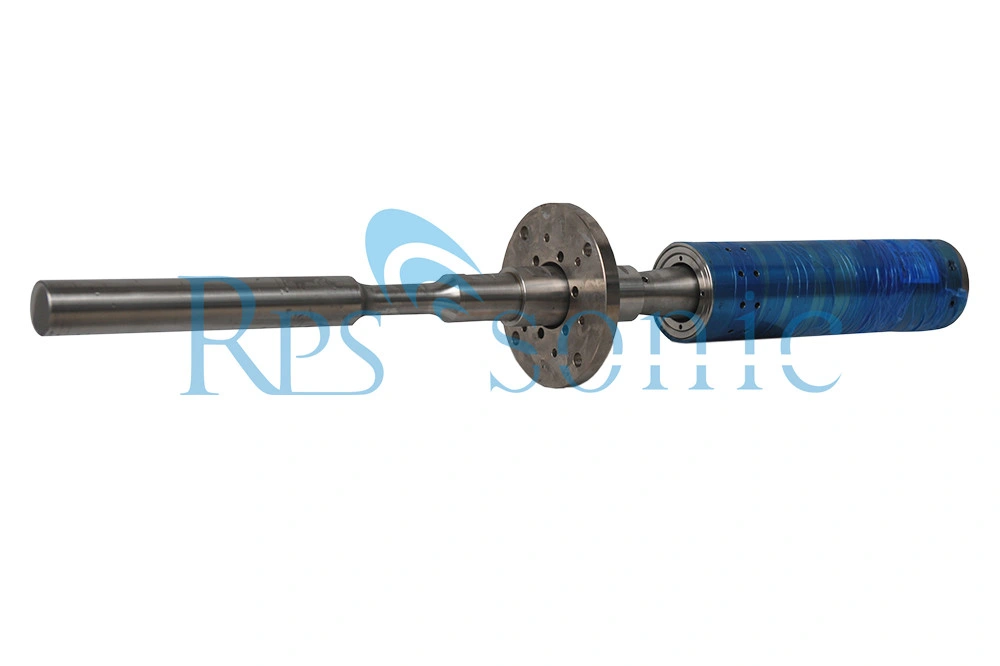Ultrasonic Probe Type Sonicator , Ultrasonic Dispersion Of Nanoparticles Materials
Description:
RPS-Sonics manufactures the most technologically advanced and reliable ultrasonic processors in the industry for applications such as: dispersion of nanoparticles, nanotubes and Graphene; cell lysing and cell disruption; sample prep; ChIP assay; homogenization; extraction; atomization; and more.
Ultrasonic Preparation of Nanoscale Devices
• Particle size uniformity, strong dispersion, crystal type control, simple preparation, high yield
• Ultrasound nano-fabrication of monodisperse, well-defined nanoparticles and reduced energy consumption
• Ultrasonic nanoprocessing is easier to achieve mesoscopic mixing than conventional mixing techniques, eliminating local concentration variations, increasing reaction rates, stimulating the formation of new phases, inhibiting reunion
Ultrasonic dispersion is transition into the dispersed state, i.e. fine or ultrafine ultrasonic grinding of solids or fluids due to ultrasonic vibrations effect. Due to specificity of the ultrasonic field created in the liquid medium, ultrasonic dispersion provides highly dispersed homogeneous, chemically pure suspensions (with the particle size below 1µm).
Grinding of particles of solids suspended in liquid or simple destruction of solid and viscous substance of metal or stone type, submerged in the liquid, requires a mode, because destruction of strong substances requires shock waves that occur due to collapsing of cavitation bubbles.
For dispersion of amorphous substances of the rocks type, kaolin, graphite, gypsum etc., pre-cavitation mode is enough, which is provided by our «Acoustic-T» devices.
Of special interest is the action of ultrasonic field on solid particle suspensions in liquid or emulsion, i.e. suspension of two liquid substances in one another without mixing. Ultrasonic power of devices is selected so that microflows of maximum intensity, but without upset to cavitation, are formed in the liquid. This leads to interesting effects. If a suspension consisting of solid particles of different sizes is sounded by such a field, they will be separated into fractions. Particles of the same size will uniformly distribute in the liquid volume and, the more so, adhere a property of staying suspended much longer, than they would do without ultrasonic treatment. As for emulsions, the ultrasonic treatment result strongly depends on its life period and duration of ultrasound action. This may cause either dispersion on one liquid into another or, vice versa, coagulation with subsequent separation of liquids.
Ultrasonic wave can be widely used in different steps of nonomaterial synthesizing processes. The most obvious is dispersing of materials in liquids in order to break particle agglomerates. Known types of systems which are used to this purpose, composed of a liquid tank and a high power ultrasonic generator.An ultrasonic dispersion system has been proposed and designed with new method of particle dispersing strategy. The main advantage of the proposed is decreasing dispersion time and increasing the particles size uniformity. It assumed that the mix of particles and liquid medium is passing through a cubical pipe. Suitable number of transducers embedded on one side of the pipe with optimum distance from each other, so that the ultrasonic intensity can be focused on some cavitations zones to stimulate dispersion function gradually. Evaluating of the optimum placement of transducers is calculated and simulated using FEMLAB package (COMSOL multi-physics 3.4). The ultrasound intensity profile is obtained from the pressure field distribution. This provides a prediction across the geometry of active cavitations zones, which are crucial for the optimization of the transducers placing. The results can then be used to increase dispersion systems efficiency in a real time controlled application. Simulation results show a better performance compared to the conventional methods.
| Item | RPS-S500 | RPS-S1000 | RPS-S1500 | RPS-S2000 | RPS-S3000 |
| Working frequency | 20kHz | 20kHz | 20kHz | 20kHz | 20kHz |
| Max power | 500W | 1000W | 1500W | 2000W | 3000W |
| Handing capacity | 0.5 to 2L/min | 0.5 to 3L/min | 0.5 to 4L/min | 1.0 to 6L/min | 1.0 to 8L/min |
| Apply | Production line, be used in combination | ||||
| Reaction tank | 10L,15L,20L,35L,stainless steel | ||||
| Working pressure | Max:5MPa | ||||
| Working temperature | Max: 350°C | ||||
Applications:
Ultrasonic have extremely capable and versatile, it can safely process a wide range of organic and inorganic materials - from microliters to liters. Typical applications include: sample preparation, dispersion, cell lysing, desegregation, homogenization, particle size reduction, soil testing, transesterification (including biodiesel production), nanotechnology (including nanoparticle and Graphene dispersion), acceleration of chemical reactions, degassing and atomization.
The new digital ultrasonicator is a powerful ultrasound processor for liquid treatments on bench-top and industrial scale. Common applications include homogenization, emulsification, dispersing & particle fine milling, lysis & extraction, dissolving vagy sonochemical reactions such as sono-synthesis and sono-catalysis. Touch display, browser remote control, automatic data recording. High Power and Full Process Control Powerful sonication is the process solution for manifold liquid processing applications, such as emulsifying, dispersing, milling vagy dissolving. The equipment provides intense ultrasound waves to fulfill demanding tasks without problems. To ensure a consistent process quality, not only the power delivered is essential, the control and monitoring of all important process parameters is key. The new generation of hdT ultrasonicators enables the operator to pilot the ultrasonic device via touch display or browser remote control.
• Dispersion
• Cell disruption
• Sample prep
• Homogenization
• Emulsification
• Nanoparticle dispersion
• Atomization
• Graphene dispersion